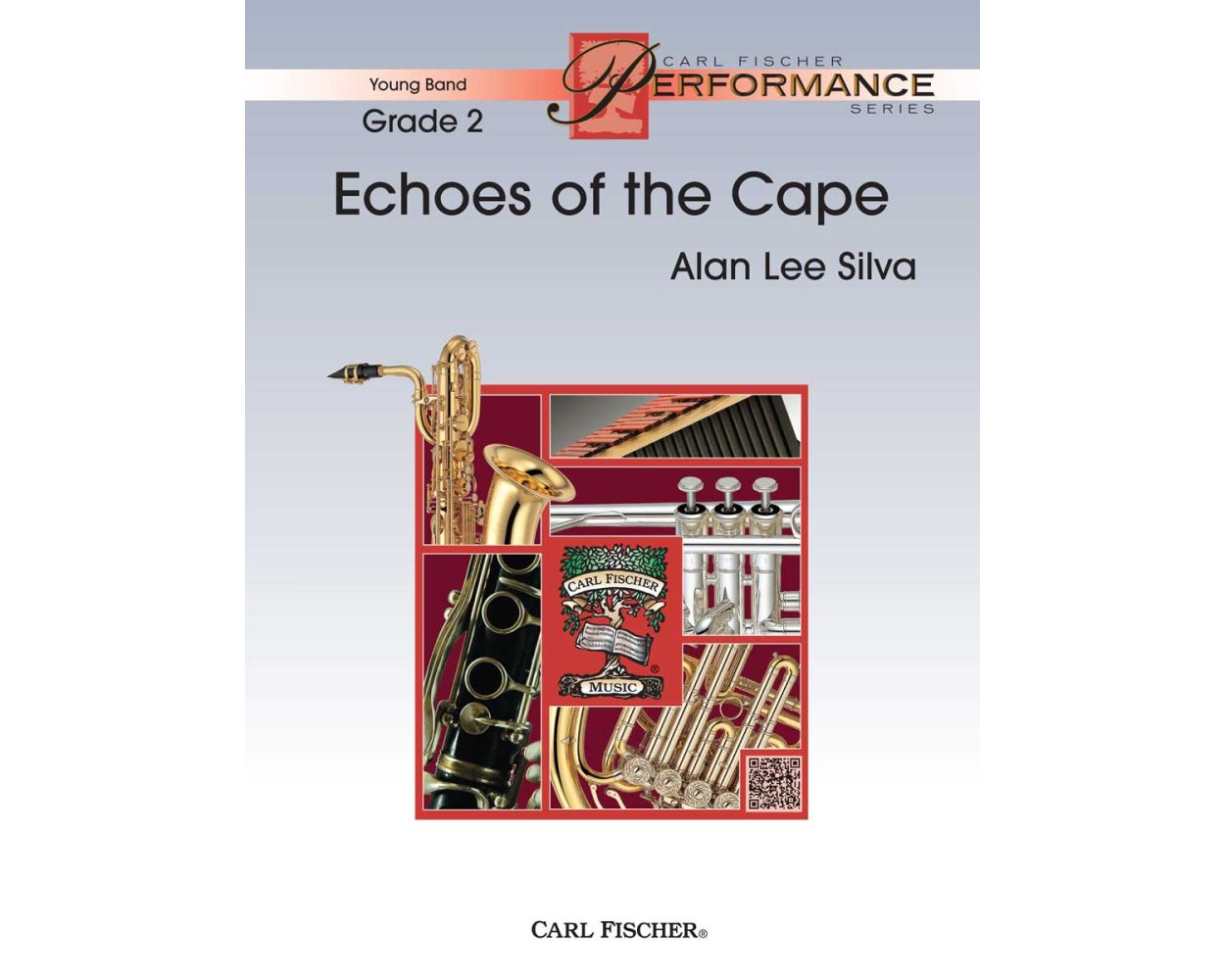Results
-
 £58.00
£58.00Echoes Of Ireland - James Swearingen
This grand setting of three beloved Irish folk tunes (The Wearing of the Green, Cockles and Mussels and The Minstrel Boy) makes a wonderful study in contrasts, in the distinctive Swearingen style. Alternately lively and warmly romantic, it fully utilizes the colorful potential of the modern concert band and will be ideal for use in festival performances. Duration: 4'
Estimated dispatch 12-14 working days
-
 £74.00
£74.00The Grey Dawn Is Breaking
The beautiful English/Irish folk song Kathleen Mavourneen is the basis for this ballad. The Grey Dawn Is Breaking offers an opportunity for young musicians to stretch their musical muscles by developing expression through dynamics, phrasing, and even rubato.
Estimated dispatch 12-14 working days
-
 £55.00
£55.00Echoes of the Cape
You will hear elements of Irish and Scottish music in this magnetic new composition from composer Alan Silva. There is a bardic nature to the piece, with low brass punches, strong percussion and flowing melodic lines in a modal style, plus hints of jigs and reels throughout. Alert your contest music committee about this strong new young band piece.
Estimated dispatch 12-14 working days
-
 £97.00
£97.00Molly on the Shore - Percy Grainger
No. 23 of Grainger's British Folk Music settings, Molly on the Shore is a rollicking treatment of a popular Irish Reel. It scampers and bounces its way through a succession of sonorous climaxes, accumulating an amazing collection of memorable counter themes as it goes along, before subsiding in a delicately scored coda that ends with a characteristic Grainger bang. An acclaimed classic, we are proud to offer this engraved and corrected edition of Molly on the Shore with a complete full score. Duration: 4' Key: Ab Ranges: Solo Cornet - C; Cornet - G; Horn - Ab; Trombone - Ab
Estimated dispatch 12-14 working days
-
 £82.95
£82.95Appalachian Journey - Brant Karrick
The Appalachians represented one of America's first frontiers, and frontier music became one of the first truly American forms of musical expression. Based on traditional fiddle tunes, Appalachian Journey combines four folk songs, providing players and the audience with a real toe-tapping treat! The melodies included are: "After the Battle of Aughrim" and "Lord Mayo I," both Irish in origin, and "Bonaparte Crossing the Rocky Mountains" along with "Whiskey Before Breakfast," adapted from the old-time fiddling tradition.
Estimated dispatch 7-14 working days
-
 £115.60
£115.60The Boys are Back in Town - Phil Lynott
The Boys Are Back in Town is a single from Irish hard rock band Thin Lizzy. The song was originally released in 1976 on their album Jailbreak. Both the single and record album are regarded as the bands most successful both commersial and musically. The songwriter Phil Lynott (1949-1986) was vocalist and bassist in the band. He has composed most of the greatest songs of Thin Lizzy.
Estimated dispatch 7-14 working days
-
 £53.50
£53.50Celtic Air and Dance No. 4 - Michael Sweeney
Featuring two traditional Irish tunes, this effective work for second year players opens with a sensitive and lyric setting of Pretty Maid Milking Her Cow. The dance segment features the familiar tune I'll Tell Me Ma with themelody traded around the band and an exciting finish. Dur: 2:50
Estimated dispatch 7-14 working days
-
 £60.99
£60.99The Willow Tree - Pádraigín Ní Uallacháin
Although this haunting tune has the flavor and sentiment of a traditional Irish folk song, it was composed in 1995 by multifaceted artist Pdraign N Uallachin. Her inspiration for the song was the idea that when we are happy or sad, the elements and the natural world are aligned with our feelings. From the wistful lyrics of the song; Down by the river there's a tall willow tree, who weeps all night for you and me. This evocative setting for band follows this sentiment through peaks and valleys of sound and emotion. Dur: 3:10
Estimated dispatch 7-14 working days
-
£106.95
The Grey Dawn is Breaking - James Meredith
The beautiful English/Irish folk song Kathleen Mavourneen is the basis for this ballad. The Grey Dawn Is Breaking offers an opportunity for young musicians to stretch their musical muscles by developing expression through dynamics, phrasing, and even rubato.
Estimated dispatch 7-14 working days
-
 £104.99
£104.99Celtic Classics - Johan de Meij
Another exciting folk song suite based on traditional Irish songs, from the sequel of Johan de Meij's successful At Kitty O'Shea's and Songs from the Catskills.
Estimated dispatch 7-14 working days
